AMD Expands G-Series Embedded SoCs with Excavator Microarchitecture
by Ian Cutress on February 23, 2016 9:00 AM EST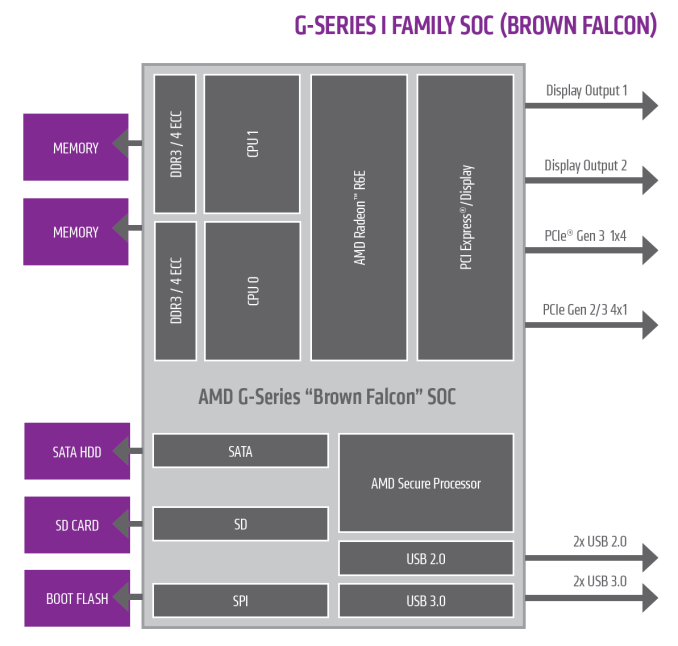
Back in October 2015, AMD’s embedded business unit announced the first SoCs from AMD using DDR4, combining AMD’s Excavator cores found in the Carrizo notebook platform but fully integrated solutions focused at digital signage, medical, military, and other verticals. These were essentially Carrizo laptop parts validated slightly differently, in a variety of configurations using DDR4, and high performance by the R-series moniker. Today’s announcement is that the G-Series SoCs, the lower performance members of the stack, will also be transitioning to Excavator.
Both the FT3 and FP4 platforms will have new pin-compatible parts with 10-year life cycles: for the FT3 package this is the lower-power G-Series LX, based on Jaguar, and in FP4 this is ‘Brown Falcon’ and ‘Prairie Falcon’, being the I-Family and the J-Family of the G-Series respectively using Excavator.
The two families of G-Series are split in more ways than just performance. The I-Family use two Excavator cores (one module) and 4 GCN compute units (256 SPs) with dual channel DDR3/4 memory and 12-15W using a configurable TDP. The J-Family in contrast are lower power, using half as many GCN compute units (128 SPs), with single channel DDR3/4 but with the capacity to enable 10-bit h.265 decode. For integration into existing platforms, the R-Series and I-Family use a similar firmware arrangement but the J-Family has a different BIOS and microcode.
On the memory front, the differentiator of dual channel DDR3/4-1600 on the I-Family with ECC support is above the single channel DDR3/4-1866 on the J-Family which does not have ECC support. Both SoC families will have a root complex with a single PCIe 3.0 x4 and four PCIe x1, along with two USB 3.0 and a USB 2.0, but the J-Family will only support one SATA port rather than two on the I-Family.
The new G-Series LX model by contrast is a dual core Jaguar part with one compute unit (64 SPs) and aimed at a 6-15W TDP window, supporting AMD Secure and a single channel of DDR3. AMD’s aim here is to provide competitive parts to ARM’s and ARM’s partners’ offerings at a roughly similar price but are x86 compatible for software and a wider support program with that 10-year longevity. It was commented that AMD has a history of long-term support, given that Geode processors are still being manufactured and sold with no real EOL in sight, but these new LX models offer an upgrade path.
Alongside the base specifications for the new embedded parts, AMD has plans down the line to introduce iTemp variants of at least the I-Family that have a wider validated temperature window.


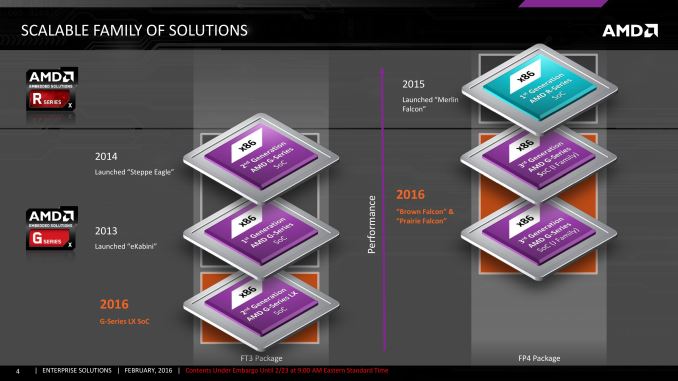
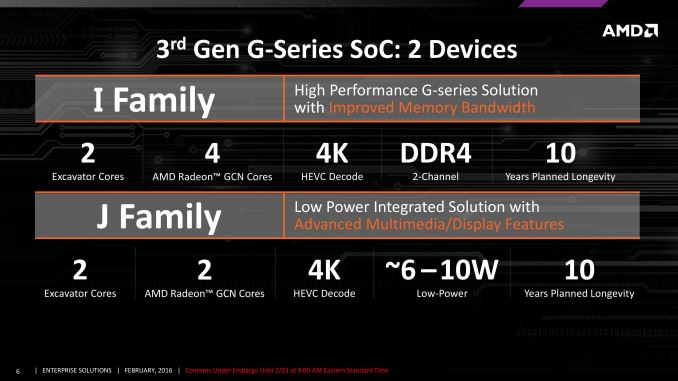
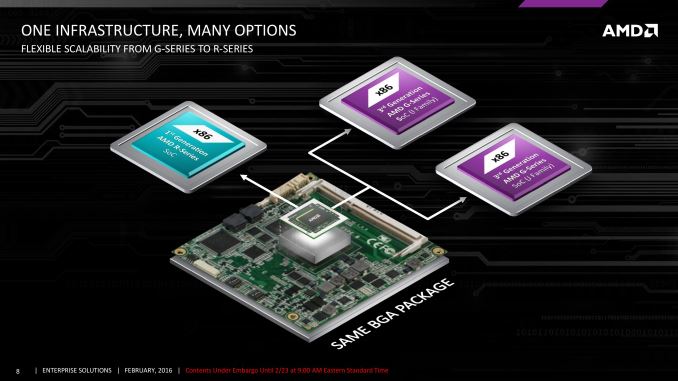
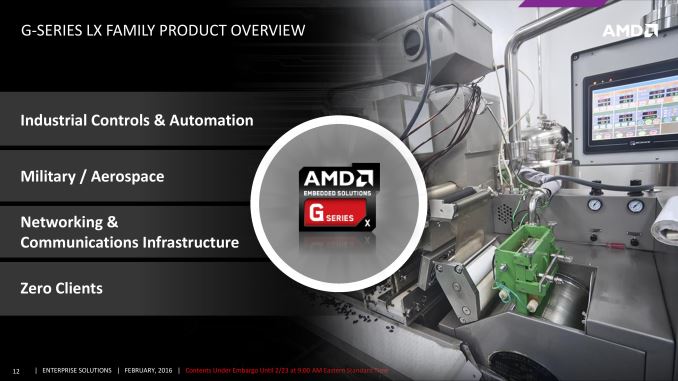

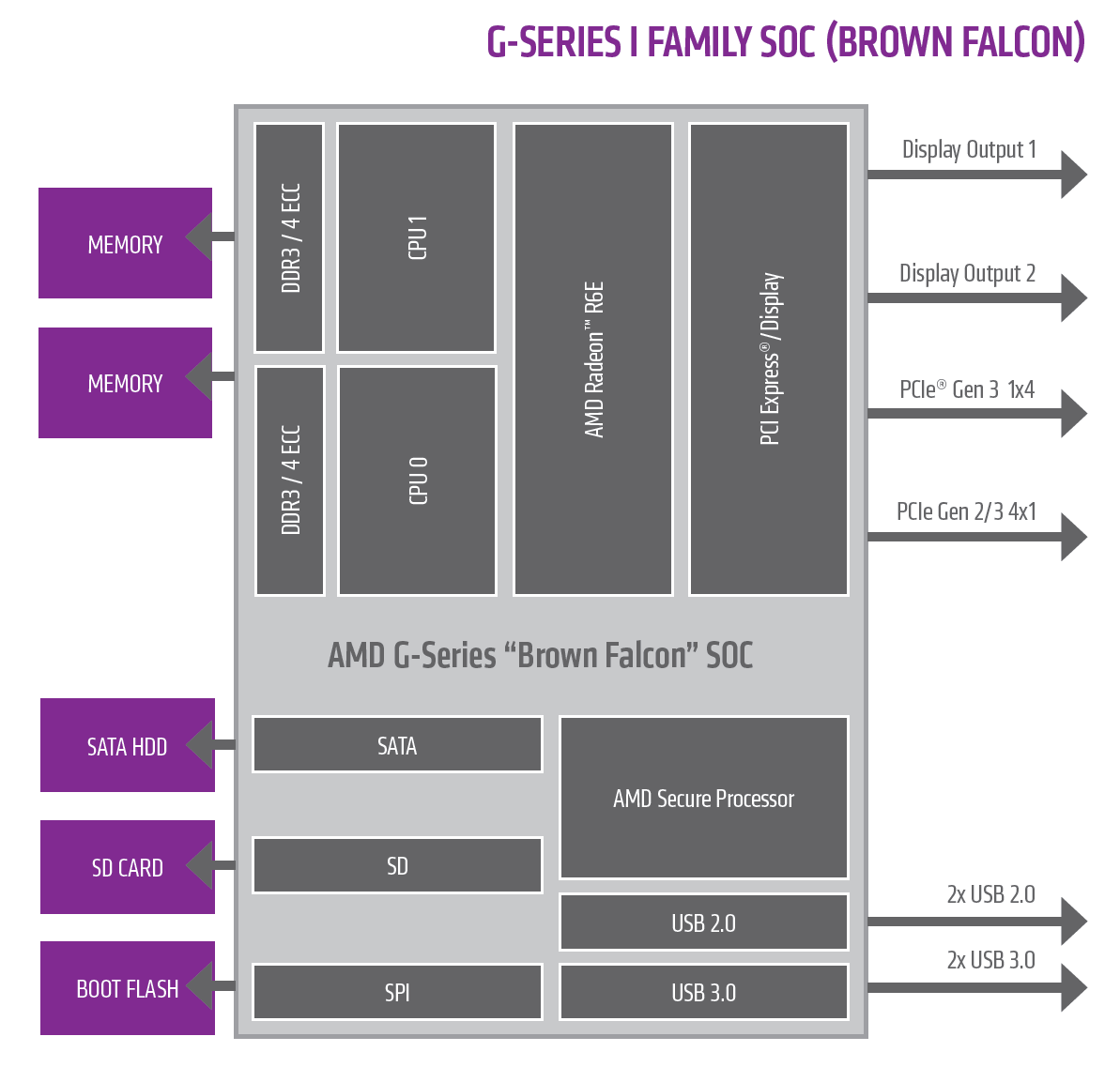
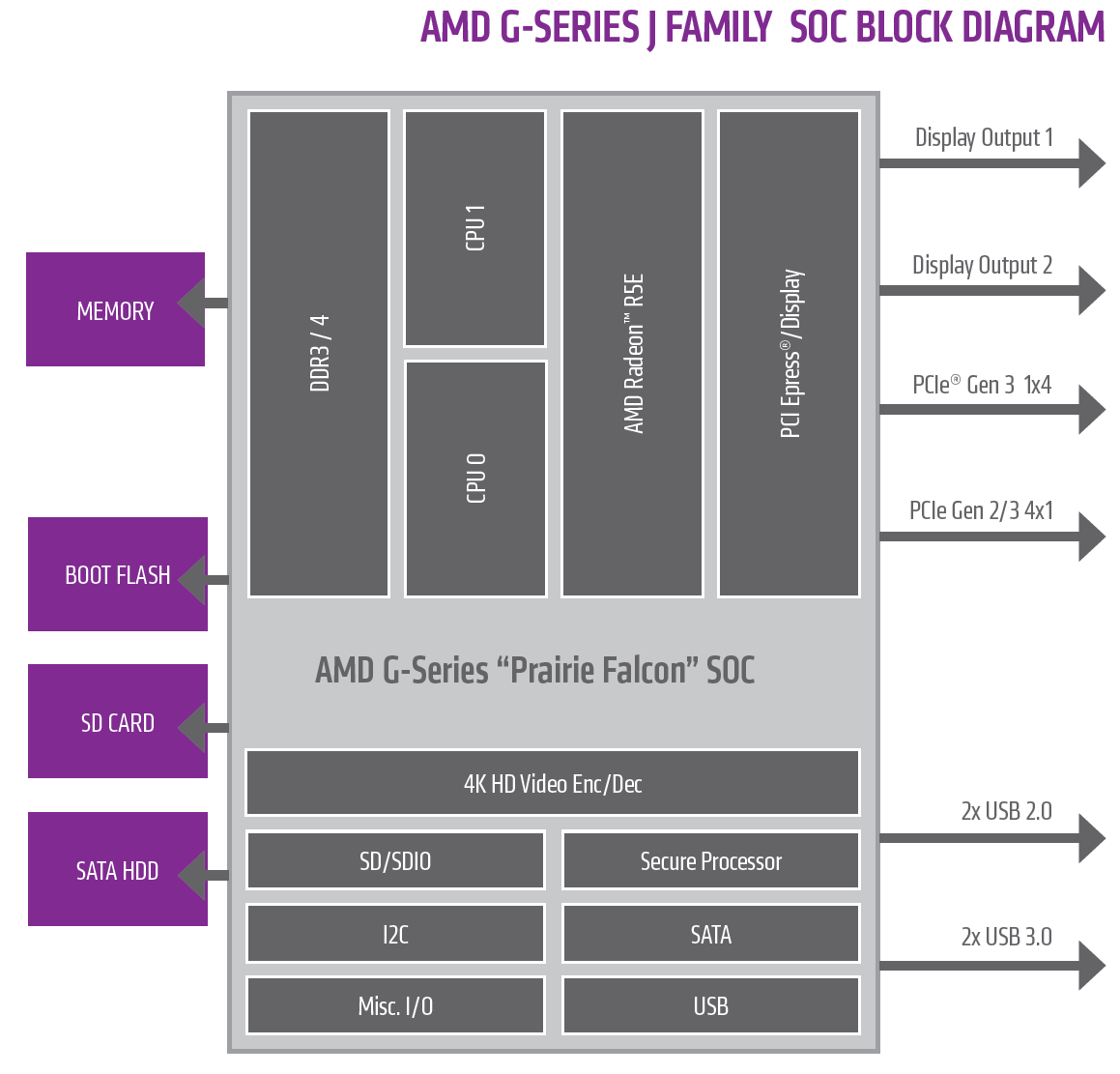














6 Comments
View All Comments
SaolDan - Tuesday, February 23, 2016 - link
Neat!CajunArson - Tuesday, February 23, 2016 - link
Sup G!Stuka87 - Tuesday, February 23, 2016 - link
These parts look great for their market. I really like that AMD offers long term support for their G-Series chips. It makes designing products around them more cost effective, as it means you don't have to redesign simply because of parts availability.Space Jam - Tuesday, February 23, 2016 - link
>Zero ClientsAMD proving self-aware *rim shot*
silverblue - Tuesday, February 23, 2016 - link
I wondered what they meant by that as well, but apparently it's just another term for an ultra-thin client, essentially going back to a terminal on a mainframe.theguyuk - Sunday, May 1, 2016 - link
What AMD need to do is either licence some of their really older soc tech to be used for ARM Android TV box power levels or produce them themselves. Nvidia has took it GPU tech to ARM socs, and while ARM license some AMD GPU tech, AMD could do better to push the ability of these GPU. Some of the ARM based socks today use really old graphic card technology that Radeon and Nvidia crushed under foot ages ago. AMD do not play to their strengths and knowledge base of experience. IMHO